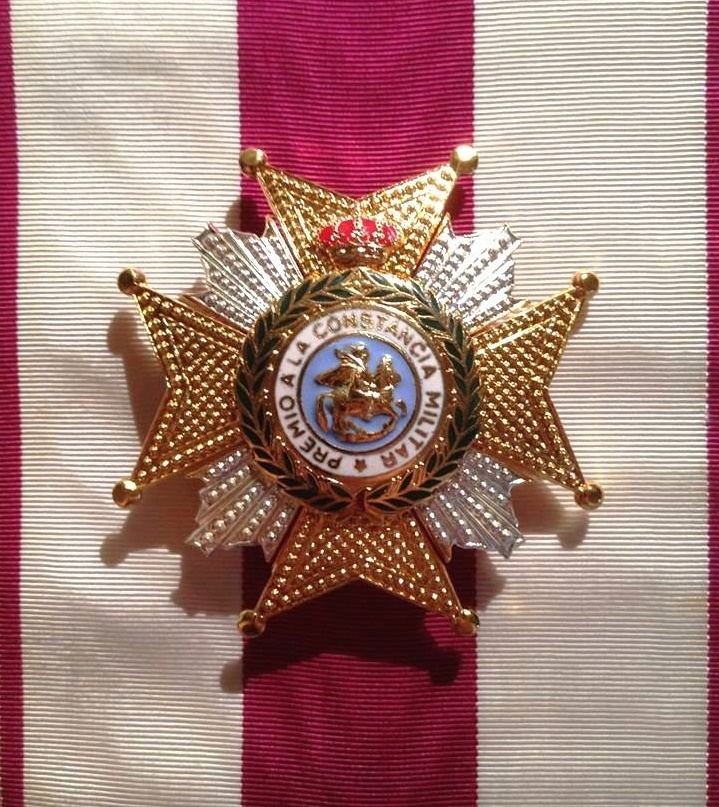Type Order of Merit Established 28 November, 1814 | Status Currently awarded | |
 | ||
Eligibility Military personnel and Guardia Civil Motto PREMIO A LA CONSTANCIA MILITAR(Award to Military Constancy) | ||
The Royal and Military Order of Saint Hermenegild (Spanish: Real y Militar Orden de San Hermenegildo) is both a general military honor and a legion created by Ferdinand VII of Spain on 28 November, 1814.
Contents
The Royal and Military Order of Saint Hermenegild is a military distinction of the Spanish Cavalry created by Ferdinand VII of Spain at the conclusion of the Spanish War of Independence in 1814.
The purpose of the Order was to serve as maximum decoration those soldiers who exceeded their military obligations and fought on, surpassing their suffering in battle, and who thus would serve as examples of bravery to His Spanish Majesty's armies.
Given the desire of the King to create a distinction of extraordinary rank, comparable to others traditional decorations, it was decided to put the Order under the Patronage of Saint Hermenegild, who was the Visigoth King of Seville who was martyred in defence of the Christian faith in the sixth century and who is the patron saint of the Spanish Armed Forces.
Its first promulgation was published in 1815, being renewed later in 1860, 1879, 1951, 1994 and its most recent modernization in 2000.
... recompensar y distinguir a los oficiales generales, oficiales y suboficiales del Ejército de Tierra, de la Armada, del Ejército del Aire, de los Cuerpos Comunes de las Fuerzas Armadas y del Cuerpo de la Guardia Civil, por su constancia e intachable conducta en el servicio, a tenor de lo que establecen las Reales Ordenanzas para las Fuerzas Armadas.
It is declared that The Order intends "to compensate and to distinguish to the general officers, commissioned officers and non-commissioned officers of the Spanish Army, Spanish Navy, Spanish Air Force, Special forces and the Spanish Civil Guard, (the militarized police service, the rural and coastal adjunct to the National Police Corps) by their faultless and exemplary conduct in the service of The Crown."
Attribution
According to its current statutes, the order is divided into four classes:
Insignia
The badge of the order is a gold, white enameled cross pattée, surmounted by a royal crown. The central medallion bears an effigy of St. Hermenegild on a horseback, surrounded by a blue ring inscribed "PREMIO A LA CONSTANCIA MILITAR" (reward for long military service). On the reverse there is the royal cypher of Fernando VII.
The star has the form of a gold Maltese cross with ball finials and silver rays between the arms and the effigy of St. Hermenegild in the central medallion, surrounded by a white ring with the order's motto and a green laurel wreath. The medallion of the Grand Cross star is surmounted by a royal crown.
Ribbon Bars
